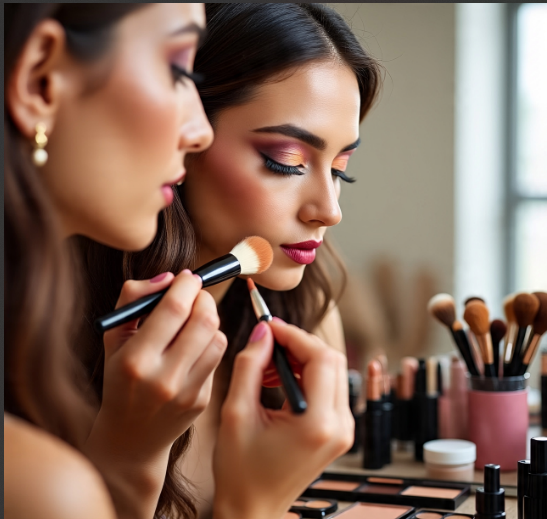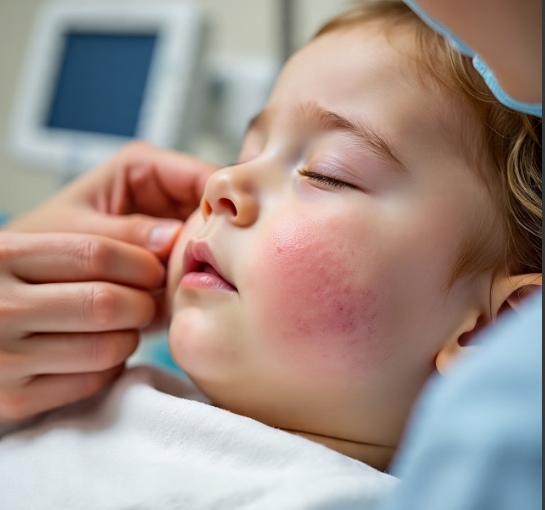Melanine How This Pigment Impacts Beauty and Health

Every person has a unique skin, eye, and hair color. The reason for these differences is a pigment called melanine. Perpetually, many people thought melanine was just about looks. In fact, melanine has a big role in the eyes of science. Melanin is not only responsible for how we look, it also protects us from the dangers of the sun and even connects to health in surprising ways. In this article, we’ll explore how melanine works, why it matters for beauty, how it protects health, and what modern research says about it.
What Is Melanine?
Melanine is a natural pigment found in our skin, eyes, and hair. It is made by special cells called melanocytes, which live in the lower layer of our skin. Inside these cells are small packages called melanosomes, where melanine is produced.
There are three main types of melanine:
-
Eumelanine: gives dark colors like brown and black.
-
Pheomelanine: gives lighter shades like red and yellow.
-
Neuromelanine: found in the brain; scientists are still discovering its exact role.
Your skin tone depends on how much melanine your body makes and which type it produces, not on how many melanocyte cells you have. All people have about the same number of melanocytes, but the level of their activity differs from person to person.

Melanine as Nature’s Sunscreen
One of the most important roles of melanine is protecting the skin from UV rays. When sunlight hits the skin, melanine absorbs harmful rays and reduces DNA damage. This lowers the risk of skin cancer and slows down signs of premature aging, like wrinkles or sunspots.
According to the World Health Organization (WHO), UV radiation is the leading environmental cause of skin cancer. People with more melanine (darker skin tones) have stronger natural protection. However, no one is fully safe without sunscreen. Doctors recommend that all skin types use SPF daily, even on cloudy days.
In fact, experts note that melanine should be valued more for its protective function than for cosmetic appearance. This shift in perspective reminds us that beauty is not just about how skin looks, but how well it is kept healthy and safe.
Melanine and Beauty
Melanine is one of the main factors that define beauty across cultures:
-
Skin tone: The balance of eumelanine and pheomelanine shapes whether skin is fair, medium, or dark.
-
Hair color: Black and brown hair have more eumelanine, while blond and red hair have less eumelanine and more pheomelanine.
-
Eye color: Brown eyes are rich in melanin, while blue or green eyes have very little.
Beauty standards differ worldwide, but leading dermatologists and clinicians insist that melanine’s protective role outweighs its cosmetic role. As explained by experts at The Treatment Bar, melanine should be appreciated first and foremost for its health benefits.
Dr. Elise van Dijk: "A tan isn’t healthy, it's your skin reacting defensively. Melanine’s job is to protect, not just beautify."
Skin Therapist Maarten de Boer: "Dark spots are melanine doing its job after injury, not flaws to erase."
This understanding bridges beauty and health, reminding us that how skin looks is inseparable from how well it’s cared for.
When Melanine Levels Change
Too Much Melanine (Hyperpigmentation)
Sometimes, melanine production increases in certain spots, leading to hyperpigmentation. This appears as darker spots on the skin and is often caused by:
-
Post-inflammatory hyperpigmentation (PIH) : occurs as dark spots that remain after acne or skin injury.
-
Melasma, also known as zwangerschapsmasker, appears as dark patches usually triggered by hormones and sunlight.
-
Sunspots (lentigines): linked to long-term UV damage.
A 2023 study in the Journal of the European Academy of Dermatology reported that hyperpigmentation is among the most frequent reasons people seek dermatology treatments worldwide.
Solutions include:
-
Daily SPF 30–50.
-
Ingredients like niacinamide, tranexamic acid, azelaic acid, and vitamin C.
-
In some cases, dermatologists recommend chemical peels or safe laser therapy.
Too Little Melanine (Hypopigmentation)
In some conditions, the skin makes less melanine:
-
Vitiligo: patches of skin lose all pigment.
-
Albinism: a genetic condition where people have very little or no melanin in skin, eyes, and hair.
Both conditions make skin more sensitive to sunlight. People with vitiligo or albinism have a higher risk of sunburn and need extra UV protection.
Beyond the Skin: Melanine and Health
Melanin does more than color the skin. Scientists have found it plays roles in health:
-
Skin health: Less melanine = higher risk of UV damage and cancer.
-
Eye health: Melanin in the iris protects eyes from light damage. Low levels can lead to light sensitivity and vision issues.
-
Brain health: Neuromelanine may protect nerve cells in the brain. Research published in Nature Medicine (2024) suggests that changes in neuromelanine levels may be linked to conditions like Parkinson’s disease.
This shows melanine is not only cosmetic, but it has protective functions across the body.
Modern Life and Melanine
Blue Light from Screens
Recent studies in the Journal of Investigative Dermatology show that blue light (HEV light) from phones, laptops, and tablets can increase pigmentation in darker skin tones. Dermatologists now recommend tinted sunscreens with iron oxides for people worried about pigmentation caused by screens.
Air Pollution
A 2023 European Skin Academy report showed that pollution particles can trigger oxidative stress in skin, which may increase melanin production and cause more pigment spots. This means urban living has a real impact on skin health.
Skin Type and Measuring Melanine
Doctors commonly rely on the Fitzpatrick scale to classify skin types (I to VI) according to how the skin responds to sunlight. But this method is not always accurate, especially for people with mixed heritage.
Newer methods are being studied, like the Melanin Index (MI) and the Individual Typology Angle (ITA), which can measure skin tone more precisely. These could help dermatologists give more personalized advice in the future.
Safe Treatments and EU Rules (2024–2025 Update)
Europe has strict rules to protect people from unsafe skin products:
-
Hydroquinone is banned in cosmetics except at trace levels.
-
Arbutin and alpha-arbutin are restricted to safe percentages.
-
Dermatologists recommend using safer ingredients such as niacinamide, azelaic acid, vitamin C, and tranexamic acid (TXA).
It is important to check daily because unchecked products online may contain harmful chemicals.
Some daily tips for healthy Melanine Balance
-
Wear sunscreen (SPF 30–50) regularly. If you are near a window indoors, it's important to wear sunscreen.
-
Don't rub your skin harshly, as over-exfoliation is the main cause of pigmentation.
-
Take a healthy diet in antioxidants (fruits, nuts, green tea) to support skin health.
-
Hold your horses, for the skin treatment result takes 8 to 12 weeks. normally.
-
Visit a dermatologist for persistent or changing spots.
- Art
- Causes
- Crafts
- Dance
- Drinks
- Film
- Fitness
- Food
- Jogos
- Gardening
- Health
- Início
- Literature
- Music
- Networking
- Outro
- Party
- Religion
- Shopping
- Sports
- Theater
- Wellness


